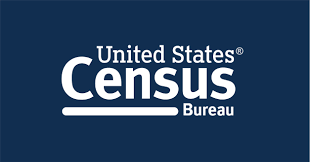A recent manuscript was published in BioMed Central Oral Health focusing on the relationship between continuing education and dental pain. The study in the manuscript, “Evaluation of a continuing education course on guideline-concordant management of acute dental pain,” found that the continuing education course increased learners’ knowledge about the guidelines and shared decision making. Former PCOH Board Member/Board Chair Dr. Deborah Polk, University of Pittsburgh, was the lead author on this project in addition to consultants from the Association of State
and Territorial Dental Directors (ASTDD).
CMS Innovation Center Reimagines Rural Health Care Approaches

CMS published Re-imagining Rural Health: Themes, Concepts, and Next Steps from the CMS Innovation Center “Hackathon” Series. The report describes lessons learned from previous Innovation Center models focused on rural health and their application to recent model development, as well as potential future areas the Innovation Center might explore to support rural communities. It also highlights themes and insights from the CMS Innovation Center-hosted 2024 Rural Health Hackathon. The Hackathon series convened rural health providers, community organizations, industry and tech entrepreneurs, philanthropies, policy experts, and patients to generate creative and actionable solutions to address the varied challenges to delivering quality health care in rural communities. The top thematic areas highlighted a need for training, regulatory changes, and collaboration to help improve access to care and support transformation.
As a next step, CMS intends to issue a Request for Application to fill the ten open spaces for the Rural Community Hospital Demonstration. The demonstration was directed by Congress and requires a test of cost-based payment for Medicare inpatient services for rural hospitals with fewer than 51 beds that are ineligible for Critical Access Hospital status. The demonstration has been operated by CMS since 2004 and is scheduled to end on June 30, 2028. The paper also outlines some possible considerations for future Accountable Care Organization-focused and other models.
The Innovation Center is committed to advancing rural health. The Center looks forward to further utilizing input from the Hackathon and robust engagement with rural health groups to design new models and innovations to address challenges facing rural, Tribal, frontier, and geographically isolated areas. Additionally, where possible, the Center may change existing models to enable greater participation by rural providers.
- Read more: Re-imagining Rural Health: Themes, Concepts, and Next Steps from the CMS Innovation Center “Hackathon” Series.
- Learn more about the CMS Innovation Center Strategy Direction
New Rural Health Value Website and Resources Available: Rural VBC–The Payer Perspective and TEAM Model Summary

The Rural Health Value team is pleased to share that we have launched a redesigned website and logo. While we have a new look – you will continue to find trusted resources that facilitate the transition of rural healthcare organizations, payers, and communities from volume-based to value-based health care and payment models. Please take a look! On the new website you will find two new resources.
- Rural Value-Based Care – The Payer Perspective, Rural Health Value Summit Report. The Rural Health Value team convened professionals and executives from national and regional health care payer organizations to share and explore insights, innovations, successes, and challenges in rural health value-based care (VBC) contracting. This report summarizes challenges and solutions followed by suggestions for rural health care organization leaders from the Summit participants.
- A one-page summary of CMS’s Transforming Episode Accountability Model (TEAM). TEAM is a mandatory, episode-based, alternative payment model, in which selected acute care hospitals will coordinate care for people with Traditional Medicare undergoing one of the surgical procedures included in the model and assume responsibility for the cost and quality of care from surgery through the first 30 days after the Medicare beneficiary leaves the hospital. Of the 741 hospitals identified for mandatory participation, 124 (16.7%) are in non-metro counties. More from CMS on TEAM.
This summary is part of Rural Health Value’s Catalog of Value-Based Initiatives for Rural Providers. The catalog summarizes rural-relevant, value-based programs currently or recently implemented by the Department of Health and Human Services (HHS), primarily by the Centers for Medicare & Medicaid Services (CMS) and its Center for Medicare & Medicaid Innovation (CMMI).
Rural Health Value facilitates the transition of rural healthcare organizations, payers, and communities from volume-based to value-based health care and payment models. Visit www.ruralhealthvalue.org or contact Clint MacKinney, MD, MS, Co-Principal Investigator, clint-mackinney@uiowa.edu.
Trends in the Health Workforce Supply in the Rural U.S
This report from the WWAMI Rural Health Research Center describes trends in the supply and distribution of clinicians in primary care, behavioral health, and obstetrical care, as well as dentists, surgeons, community health workers, and home health aides, in the rural vs. urban U.S. workforce nationally and regionally.
Good Read: Implementation of SPD 15 in the American Community Survey

Earlier this year, the U.S. Office of Management and Budget (OMB) published the results of its review of Statistical Policy Directive No. 15 (SPD 15) and issued updated standards for maintaining, collecting and presenting race and ethnicity data across federal agencies. The updated 2024 SPD 15 requires the use of a combined race and ethnicity question, the addition of a new “Middle Eastern or North African” minimum reporting category, and the collection of detailed race and ethnicity responses.
Since then, programs across the U.S. Census Bureau have been assessing how and when to implement the updated race and ethnicity standards set by OMB in the 2024 SPD 15. We expect race and ethnicity data that align with the revised standards will enhance the entire range of Census Bureau data products that describe the demographic makeup and socioeconomic characteristics of our country and our diverse communities.
Read more.
Written by: Donna M. Daily, Division Chief, American Community Survey Office and Karen Battle, Division Chief, Population Division
New Report Available on Oral and Mental Health During and After Pregnancy

The CareQuest Institute for Oral Health released a report, “Oral and Mental Health During and After Pregnancy.” Pregnant people are at a higher risk of developing periodontal disease and caries. The report cites the need for better medical-dental integration in order to address whole-person health through pregnancy and postpartum periods.
New Brief Released on Minimally-Invasive Oral Care
Community Catalyst released a brief, “Minimally-Invasive Care: Policy Opportunities to Improve Dental Care Access and Affordability.” This resource provides an overview of state-level policies advocates can push for to ensure communities have access to comprehensive dental services, including minimally-invasive care, as well as federal policy considerations that will support its availability.
Big Gender Gap Seen in Health Center Visits
Link Between Oral Health and ADHD Explored
Nearly 9 million adults in the United States have attention-deficit/hyperactivity disorder (ADHD). According to a new report from CareQuest, adults with ADHD face more oral health risks than adults without ADHD. This is partly due to the medications used to treat ADHD causing side effects such as increased tooth decay, gingivitis, and other issues. Dental and medical providers should work together to maintain optimal oral health.
CDC Releases Dental Caries Surveillance Report

The Centers for Disease Control and Prevention (CDC) released a new report, the “2024 Oral Health Surveillance Report: Dental Caries, Tooth Retention, and Edentulism, United States, 2018-March 2020.”
This report used data from the National Health and Nutrition Examination Survey to provide national estimates for the prevalence and severity of dental caries in primary and permanent teeth for individuals 2 years or older and for tooth retention in adults age 20 years or older. Among the findings, the report found that half of children ages 6 to 9 have had cavities in their primary or permanent teeth. More than 1 in 7 adults ages 65 and older have lost all of their teeth.
